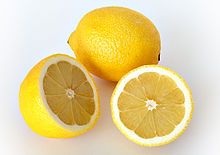Fat Replacer: Pectin Still Going Strong
As a fat replacer, pectin’s proven its value.

As a fat replacer, pectin’s proven its value.
Let’s face it: indulgent foods will never go away. They’re too delicious for that. But food and beverage manufacturers can still ditch the fat content of some of these foods-or at least substantial amounts of it.
Pectin, a natural polysaccharide found in the peels of many fruits, has been used to this end for years. Available in highest purity from citrus fruits, it’s used as a gelling agent, a texturizer, for enhanced mouthfeel and moisture retainment-all things that fat is good for.
Pectin isn’t new to food and beverage markets, but its value is proven. And ingredient suppliers can’t seem to get enough of it.
FMC Corp. (Philadelphia) is just one example of recent pectin business acquisitions. In August, the company purchased Pectine Italia, a supplier of lemon pectins suited for products such as jams, confectionery, bakery fillings, and fruit beverages. The acquisition complements FMC’s existing lines of natural colors and stabilizers because, explains FMC, “Pectin is label friendly. It’s well known and widely accepted by manufacturers and consumers alike.” And beyond its simple appeal on ingredient labels, pectin’s fruit source can offer extra benefits to finished goods: soluble fiber, and even vitamins, antioxidants, or other nutrients if they aren’t degraded during food manufacturing.
While lemons make up a significant portion of pectin sources globally, other fruit sources are widely available. Botanical ingredients supplier Naturex (Avignon, France) recently acquired Poland-based Pektowin for its citrus, citrus-apple, and apple pectins, the direct byproduct of an apple juice concentrate business.
“Generally speaking, we obtain the same functionalities from both origins in terms of gelling power, viscosity enhancement properties, and stabilizing properties,” says a Naturex spokesperson. “However, there are a few specific applications, like glazings or clear beverages, where citrus pectins are more suitable because their color is lighter. So in the case of clear and transparent applications, we recommend pectins of pure citrus origin.”
Kiwi presents a newer source of pectin-at least for North American markets-with Stratum Nutrition (St. Charles, MO) now distributing ApuraGreen whole kiwi paste. Developed by the New Zealand–based company Anagenix, ApuraGreen is greenish-brown in color; yet, Stratum says that this pectin won’t discolor or caramelize white-based products or other products requiring color stability.
In an interview with Nutritional Outlook, Stratum director of applications and product development Ibrahim Abou-Nemeh alluded to ongoing research on his company’s newest ingredient, alone and in comparison to other products on the market. In an early product trial, adding 3% ApuraGreen to a chocolate cookie allowed for 40% fat reduction and 30–50% calorie reduction.
Sidebar
Pectin: A Functional Food?
Besides its use as a fat replacer, promising (yet limited) research suggest a potential role for pectin beyond standard food and beverage manufacturing. Recent in vitro and in vivo studies linked pectin to programmed prostate cancer cell death, cholesterol management, blood sugar management, and satiety.
The Nutritional Outlook Podcast Episode 36: Best of the Industry Service Provider, Radicle Science
December 26th 2024Nutritional Outlook's managing editor, Sebastian Krawiec, interviews Radicle Science co-founders, Pelin Thorogood and Jeff Chen, MD. Radicle Science has been selected as this year's Best of the Industry, Service Provider.